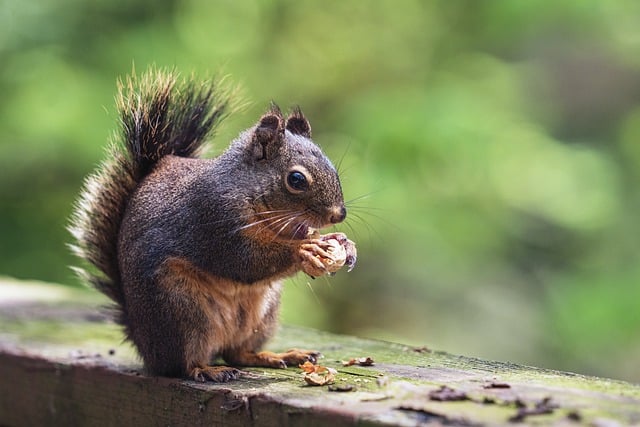Native plant landscaping is an eco-friendly and practical way to create a water-efficient backyard. By using local flora adapted to regional conditions, it reduces water consumption, minimizes maintenance, promotes biodiversity, and supports local ecosystems. Selecting native plants requires strategic planning, considering sunlight, soil moisture, and plant preferences. Efficient irrigation systems, hardscaping, and alternative turf options further reduce water use. Regular watering during dry periods, deep and infrequent watering, pruning, and applying mulch encourage deep root growth and minimize soil moisture loss, contributing to long-term water conservation in a sustainable garden.
“Revolutionize your water-efficient backyard with native plant landscaping! This eco-friendly approach not only reduces water consumption but also fosters a vibrant, low-maintenance garden. In this comprehensive guide, we explore the benefits of native plants and provide practical tips for selection, design, and care. Discover how to create a beautiful, sustainable landscape that conserves water and supports local ecosystems. From understanding key concepts to maintaining long-term efficiency, transform your outdoor space into a water-wise oasis.”
Understanding Native Plant Landscaping and Its Benefits
Native plant landscaping is an approach that leverages the unique flora naturally occurring in a specific region to create stunning outdoor spaces while promoting sustainable water use. Unlike traditional gardening, which often relies heavily on irrigation, native plant landscapes are designed to mirror the natural habitats of local wildlife and ecosystems. By choosing plants adapted to the area’s climate, soil conditions, and rainfall patterns, homeowners can significantly reduce their water consumption.
This method offers numerous advantages for both the environment and water-conscious property owners. Native species require less maintenance and water since they’ve evolved to thrive in the region’s natural conditions. They provide food and shelter for local wildlife, enhancing biodiversity. Moreover, native plant landscapes contribute to the overall health of ecosystems by preventing the spread of invasive species and supporting the unique characteristics that make each region distinct. For those aiming to create a water-efficient backyard, adopting native plants is a smart step towards conservation and a beautiful outdoor environment.
Choosing the Right Native Plants for Your Water-Efficient Backyard
When designing a water-efficient backyard, selecting native plants is an intelligent choice that offers numerous benefits. These plants are well-adapted to local conditions, including rainfall patterns and soil types, making them naturally more resilient and less dependent on irrigation. This adaptation means they require less water to thrive, reducing your overall water consumption significantly. Native flora also provides food and habitat for local wildlife, contributing to a healthier ecosystem right in your backyard.
Consider factors like sunlight exposure, soil moisture levels, and the specific needs of each plant when making your selection. Some native species are more drought-tolerant, while others prefer slightly moist conditions. Choosing plants that match your yard’s unique characteristics ensures they’ll flourish with minimal intervention. This personalized approach to landscaping not only conserves water but also creates a beautiful, sustainable outdoor space.
Designing and Implementing a Water-Conserving Landscape
Designing a water-efficient backyard starts with careful planning and consideration. Incorporate native plants that thrive in your region, as they require less water and are adapted to local conditions. Choose drought-tolerant species for areas exposed to full sun and select part-shade plants for cooler spots. A well-designed landscape should also include various microclimates, allowing you to strategically place plants based on their moisture needs. Efficient irrigation is key; consider a drip system or soaker hoses that deliver water directly to plant roots, minimizing evaporation.
Implementing these strategies requires a thoughtful approach to layout and selection. Create functional areas, such as seating niches or play zones, incorporating hardscaping elements like permeable pavers or gravel paths. Reduce lawn coverage, opting instead for drought-resistant grasses or alternative turf options. Regularly assess the health of your plants and adjust watering schedules based on seasonal changes and weather patterns. With these strategies in place, you can transform your backyard into a water-efficient oasis that reduces consumption without sacrificing beauty.
Maintaining Your Native Plant Garden for Long-Term Efficiency
Maintaining a native plant garden is an ongoing process, but it ensures long-term efficiency in water conservation. Regular watering is still required, especially during dry spells, but native plants are adapted to local conditions and often need less water than non-native varieties. Ensure you water deeply and less frequently to encourage deep root growth, which makes plants more drought-resistant.
Pruning and deadheading spent flowers can also help control water use, as it reduces the energy the plant needs for new growth. Additionally, mulching around plants helps retain soil moisture, further enhancing water efficiency in your water-efficient backyard. These simple practices contribute to a sustainable garden that requires less irrigation over time.
Native plant landscaping offers an effective solution for achieving a water-efficient backyard while enhancing ecological balance. By selecting suitable native plants and implementing strategic design, you can create a stunning garden that reduces water consumption and supports local wildlife. With proper care, your native plant garden will thrive, ensuring long-term efficiency and sustainability. Embrace the benefits of this approach to contribute to both environmental conservation and responsible water management in your outdoor space.
